NASA images that reveal the true color of the oceans
The Agency’s PACE satellite shows green, turquoise and even beige colors, due to the presence of plankton and nutrients.
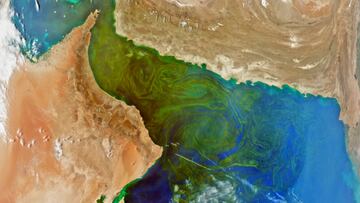
The waters of the Earth can be blue, of course, but also beige. In fact there are so many hues of blue, shades of green and colors in between that one ends up being amazed by the palatte colors present. In February, NASA launched its PACE (Plankton, Aerosol, Cloud, ocean Ecosystem) satellite with which it has been capturing images of not just the aqueous surfaces of our planet, but also pictures that give you a whole new perspective of the Earth’s surface which can now be consulted on its website.
One of the strangest colors is the following green, caused by the presence of phytoplankton. In this image of the Gulf of Oman, a high concentration of this organism (Noctiluca scintillans) can be seen, which according to NASA emerges “massively” during the winter in this area.
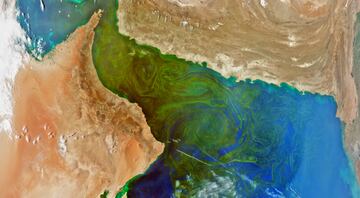
In New Zealand, as in other places shown by NASA, the coasts are surrounded by turquoise edges, a color that can be caused by the presence of sediments from the seabed, churned by waves and tides. These sediments feed populations of small algae which, in turn, are food for phytoplankton. This creates a microscopic and marine menu that gives color to the coasts of New Zealand.

What is the water going to be, purple or pink? Here you have the answer. In this image of southern China, modified by PACE to find the elements present, icy clouds and snow are purple, liquid clouds are pink, and water is black. And there are more colors: the arid soil is brown and the vegetation is garnet red. The true-color version of the image (the second picture below), however, shows what appears to be a simple “plain white” cloud system.
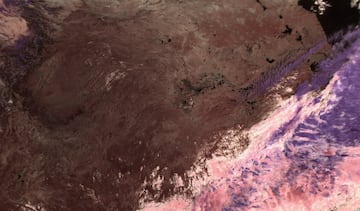
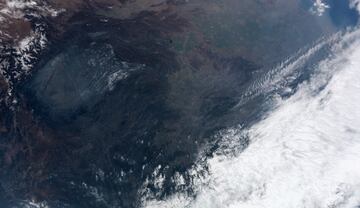
In this last image you can see a beige color to the right of a sliver of water in the right-side of the picture, which belongs to the Aral Sea, a watery mass that was once the fourth largest lake in the world. In 1960, the Soviet Union diverted its water to irrigate its crops, causing aerosols to escape from the exposed lake bed. “A major public heath hazard, much of the dust is contaminated with chemicals,” explains NASA.
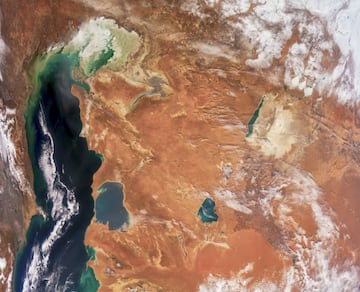
The above are just a small selection of the 36 images posted on the PACE “First Light” Gallery. Feel free to visit the NASA team’s website and take the global tour of PACE’s Ocean Color Instrument (OCI) images.





